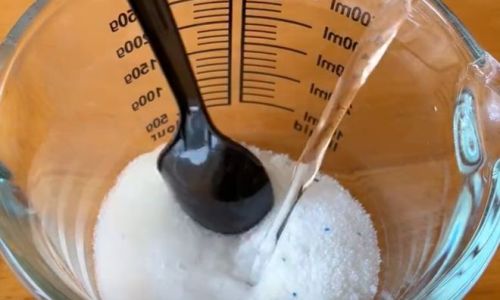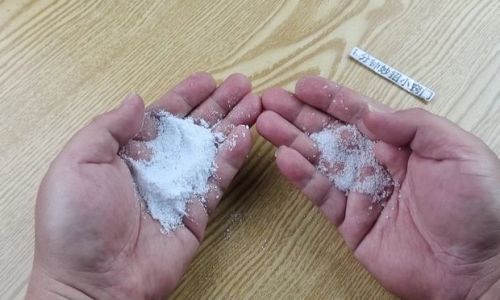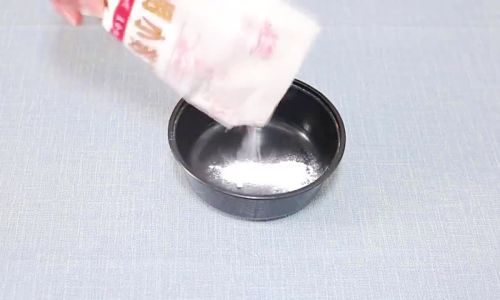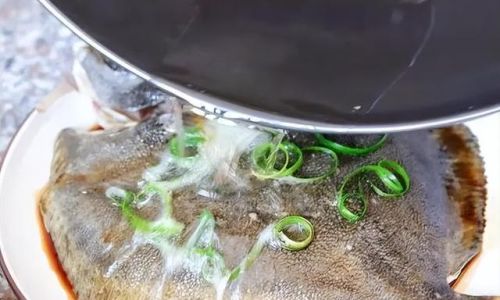Table of content
Sugar, a staple ingredient in kitchens worldwide, is renowned for its ability to sweeten dishes, balance flavors, and enhance textures. However, one common frustration many home cooks and bakers face is discovering that their once-pristine granulated sugar has transformed into a solid, stubborn mass. This phenomenon, often caused by moisture absorption, can disrupt recipes, waste ingredients, and leave even seasoned chefs scratching their heads. Fortunately, clumped sugar is not a lost cause—with the right techniques, you can revive it to its original state and prevent future mishaps. This article explores the science behind sugar clumping, practical methods to restore it, and proactive strategies to keep your sweetener flowing freely.
Understanding Why Sugar Clumps
Before diving into solutions, it’s essential to grasp why sugar hardens. Granulated sugar, or sucrose, is hygroscopic, meaning it naturally attracts and absorbs moisture from its surroundings. When exposed to humidity—whether through air, improper storage containers, or fluctuating temperatures—sugar particles bond together, forming crystals that merge into larger clumps. Over time, this process can lead to a rock-hard block that resists even the most vigorous scooping.

Several factors exacerbate clumping:
- Humidity: High moisture levels in the air, common in kitchens, basements, or during rainy seasons, accelerate absorption.
- Storage Containers: Non-airtight jars, bags, or containers allow moisture to seep in.
- Temperature Fluctuations: Rapid changes in heat or cold (e.g., placing sugar near a stove or in a damp refrigerator) create condensation.
- Age of Sugar: Older sugar is more prone to clumping as its particles degrade and lose their loose structure.
Immediate Fixes for Clumped Sugar
When faced with a hardened sugar lump, time is of the essence. The sooner you act, the easier it is to restore the sugar’s texture. Here are five tried-and-tested methods:
The Fork or Spoon Method
For mildly clumped sugar, a simple utensil can suffice. Insert a fork or spoon into the clump and gently pry it apart, working from the edges inward. This method is ideal for minor clumping but may prove tedious for larger masses.
Food Processor or Blender
For stubborn blocks, a food processor or blender is a game-changer. Break the sugar into smaller chunks manually, then pulse the machine in short bursts until the sugar regains its granulated form. Avoid over-processing, as this can turn sugar into powdered consistency.
Baking Sheet Revival
Preheat your oven to the lowest setting (typically 170°F or 75°C). Spread the clumped sugar evenly on a baking sheet and place it in the oven for 10–15 minutes. The gentle heat will dry out excess moisture without melting the sugar. Stir occasionally to ensure even drying.

The Bread Trick
Place a slice of fresh bread or a few apple wedges on top of the clumped sugar in an airtight container. Let it sit overnight. The sugar will absorb moisture from the bread or fruit, softening the clumps. Remove the bread or fruit the next day to prevent mold growth.
Microwave Method (Use with Caution)
If you’re in a hurry, the microwave can help, but caution is key. Place the sugar in a microwave-safe bowl, add a damp paper towel on top, and heat in 10-second intervals. Check frequently to avoid melting. This method works best for small clumps.
Preventing Future Clumping: Long-Term Strategies
Restoring clumped sugar is only half the battle. Implementing preventive measures ensures your sweetener stays free-flowing and ready for use.
Invest in Airtight Containers
Transfer sugar to containers with tight-fitting lids, such as glass jars with rubber seals or plastic containers designed for dry goods. Avoid metal cans, which can rust and introduce moisture.
Add a Desiccant
Tuck a few silica gel packets (often found in new shoeboxes or vitamin bottles) into your sugar container to absorb excess moisture. Alternatively, use a piece of terracotta clay or a dried chili pepper—natural desiccants that ward off humidity.

Store in a Cool, Dry Place
Avoid placing sugar near stoves, dishwashers, or windows, where heat and humidity fluctuate. A pantry shelf or kitchen cabinet away from appliances is ideal.
Freeze for Long-Term Storage
For infrequently used sugar, freezing can extend its shelf life. Place the sugar in a freezer-safe, airtight bag and store it at 0°F (-18°C). Thaw at room temperature before use.
Rotate Stock Regularly
Practice the “first in, first out” rule: use older sugar batches first to prevent degradation. Label containers with dates to track freshness.
Special Considerations for Different Sugar Types
Not all sugars are created equal. Brown sugar, which contains molasses, is notoriously prone to clumping due to its higher moisture content. Here’s how to handle it:
- Brown Sugar: Store it in an airtight container with a terracotta disk (available at baking stores) to maintain moisture balance. If hardened, place a damp paper towel in the container overnight or use the microwave method.
- Powdered Sugar: Avoid exposure to air, as it clumps easily. Sift before use to break up lumps.
- Raw Sugar: Its larger crystals are less prone to clumping but still require proper storage.
When to Toss Clumped Sugar
While most clumped sugar can be salvaged, exceptions exist. Discard sugar if:

- It shows signs of mold (fuzzy growth) or discoloration.
- It emits a foul odor, indicating spoilage.
- It has been contaminated by pests or foreign particles.
The Science Behind Sugar Restoration
Restoring clumped sugar hinges on breaking the bonds between sucrose molecules. When sugar absorbs moisture, its crystals form hydrogen bonds, creating a lattice structure. Applying heat (oven or microwave) or mechanical force (blending) disrupts these bonds, allowing the sugar to re-granulate. Desiccants work by absorbing ambient moisture, maintaining a dry environment that discourages clumping.
Eco-Friendly and Cost-Effective Hacks
For those seeking sustainable solutions, repurpose household items:
- Use a clean, dry orange peel instead of bread to soften sugar.
- Recycle old silica gel packets from packaging.
- Opt for reusable cloth bags lined with wax paper for storage.
Conclusion
Clumped sugar is a reversible nuisance, not a culinary dead end. By understanding the causes—humidity, poor storage, and age—and employing targeted fixes like heat, mechanical disruption, or desiccants, you can rescue even the most stubborn blocks. Preventative measures, from airtight containers to strategic storage locations, ensure your sugar remains a reliable ally in the kitchen. Whether you’re baking a cake, sweetening tea, or crafting a glaze, a little proactivity (and a fork or two) will keep your sugar flowing freely. Say goodbye to clumps and hello to perfectly textured treats—every time.






0 comments